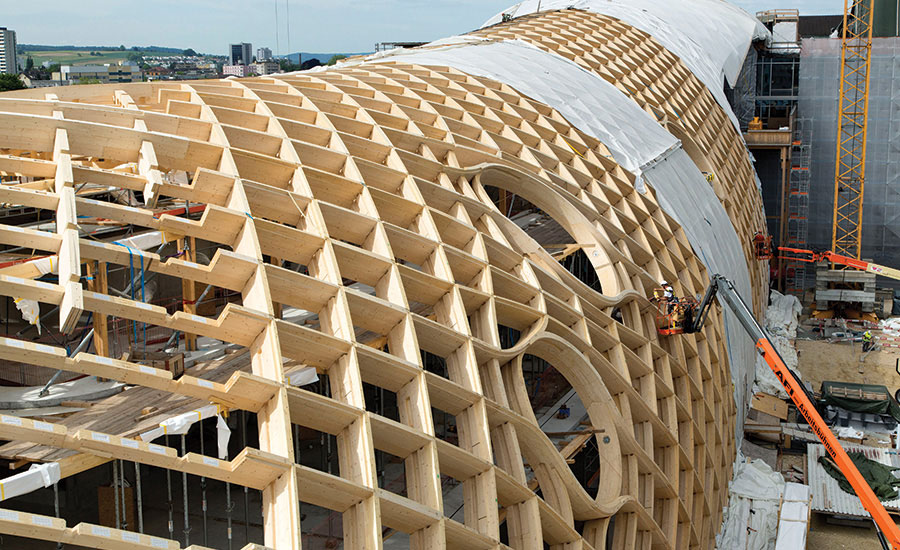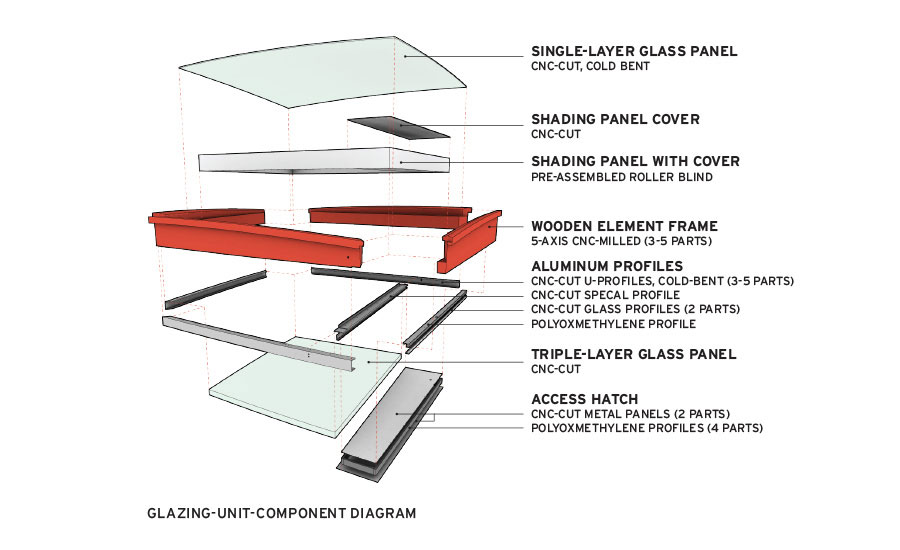A Closer Look at the Gridshell Roof of Swatch Headquarters by Shigeru Ban

Photo © Didier Boy de la Tour

Image courtesy Shigeru Ban Architects

Image courtesy Shigeru Ban Architects



A mind-boggling number of parts and pieces clad Shigeru Ban’s new headquarters for Swatch in Biel/Bienne, Switzerland. Nearly 2,800 uniquely shaped facade panels cover the more than 100,000-square-foot surface of the building’s free-form timber gridshell.
Although there are three primary cladding-panel types—metal, glass, and ETFE cushions—the tally balloons to nine if one takes into account that some are fixed, some are operable, and many include photovoltaics. In all, there are tens of thousands of components making up the facade.
An examination of the enclosure’s 477 glazed assemblies, of which no two are alike, gives a sense of the challenge. Some 25 different components comprise each unit. The chief elements include a laminated veneer lumber frame holding a curved single-glazed external lite and a planar triple-glazed inner one. The cavity in between, which is slightly pressurized to avoid the intrusion of dust, houses a motorized retractable shade. Meanwhile, the whole unit is continuously supplied with air to prevent condensation.
For help managing the cladding’s extreme variety, the designers turned to 3-D specialist Design-to-Production. The Zurich-based firm often works on unusually shaped digitally fabricated timber buildings, but typically joins the project team after selection of a fabricator, at which point they create the files to be fed to the computer-controlled equipment. But for the Swatch headquarters, the company was involved at a much earlier stage, serving as what managing partner Fabian Scheurer describes as a “geometric controller.” Working parametrically, Design-to-Production helped create a 3-D reference model that fixed the overall geometry, devised a naming convention for the different cladding types as well as a method for mapping them, and coordinated the interfaces among the timber components, the facade elements, and the building services, including water for heating and cooling panels, air supply for the glazing units and the ETFE pillows, and power for the operable elements. (Accommodating this mechanical infrastructure would require 5,000 cutouts within the wood structure.) The company also tracked the supply chain for the components.
The strategy worked well. Of the 62,792 prefabricated parts in the confoundingly complicated Swatch facade, only 72 were made incorrectly—a 1.1 percent error rate.
Back to main Continuing Education story: Mass Timber Construction Swatch Headquarters by Shigeru Ban










